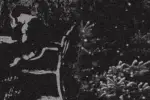The holiday season is approaching, and along with the snow, Christmas songs and family gatherings comes arguably one of the best parts — Christmas movies. Just like another certain holiday, this year is no exception to the rule of watching Christmas films come the holiday season. One film in particular that has been garnering quite a bit of attention lately is “Last Christmas.”
The film, which was released Nov. 8, stars “Game of Thrones” actress Emilia Clarke and Henry Golding, who recently starred in the smash hit film adaption of “Crazy Rich Asians,” along with the fantastic Emma Thompson, who has been in numerous films during her career.
If you have seen any of the billboards that have been plastered everywhere, you may have been under the assumption that the film is your typical rom-com set during the holidays. I know I was under that assumption when I dragged my friends along with me to see “Last Christmas.”
The film starts off with the makings of a typical cliché rom-com/holiday movie. We are introduced to Clarke’s character, Kate, who is singing a George Michael song in a Christmas pageant during the late ‘90s. The film then quickly flashes forward to modern day, where we see our lovely lead in a bar, all grown-up, playing the same song (“Heal the Pain”) on a jukebox.
If you weren’t already led to believe that the film was a Christmas/rom-com before, you are sure to when you find out that Kate is an elf at a Christmas shop that is open year round. We, the audience, see that, like other rom-coms, our main character is down on her luck, bouncing from couch to couch, struggling to make her childhood dreams of singing for a living come true. Then, somehow, right on cue, enters the dreamy gentleman here to change everything around for the better, or so we are led to believe.
“Last Christmas” continues with the typical rom-com tropes for a little while longer. Kate spends time with Tom. He shows her around, inspiring her to “look up” and get a different perspective of London. She confides in him about her dreams and aspirations. However, things get a little fishy when Tom stops showing up to meet with Kate, and when she tries to look for him at the places he supposedly frequents, no one knows who he is.
Suddenly, we are hit with a ton of bricks when we see that our beloved Tom was never really there, but was instead a ghost who had donated his heart to Kate after he died in an accident a year prior. It is revealed that all of her changes of heart (pun intended) weren’t really a result of Tom helping her through things in person, but rather from him speaking to her through his heart.
Some critics and viewers (including my two friends) found fault with the twist and saw it coming from a mile away. I get it; I mean, I didn’t see the twist coming, but I could have put two and two together. The movie is called LAST Christmas after all. While the twist might have been easily spotted, it is still smart and works for several reasons.
Firstly, the twist prevents the movie from ending like a predictable romantic comedy. If the guy was never really physically there or alive at all in the first place, how could the girl fall in love with him and end up with him?
The use of the twist and the fact that Kate does not end up with Tom — or any other man — at the end of the film, but has still changed her life around for the better, solidifies the concept that you do not need to be with someone to be happy. The use of the twist also allows for the film to have a chance at being desirable to those who would not typically sit down and watch a romantic comedy.
Secondly, the twist also works to help the movie steer clear of being too much of a cliché, cheesy Christmas flick, while still sending the heartwarming messages that can typically be expected of them.
Yes, the film is set mostly during the holiday season and the main character does in fact work at a store that exclusively sells holiday merchandise — seems like the makings of a Hallmark Christmas film, doesn’t it? However, it can be argued that the story could still stand on its own without relying on the Christmastime setting.
Many romantic comedies that came before “Last Christmas” have taken the path of being less predictable by including a twist while still leaving viewers satisfied. Such romantic comedies include “500 Days of Summer,” “Forgetting Sarah Marshall,” “Leap Year” and “About Time.” In these films, the leading gentleman or lady does not end up together with whom we thought they would.
In the case of “500 Days of Summer” and “Forgetting Sarah Marshall,” it is because the characters mature and come to the realization that they are better off with someone else. In “About Time,” it is because the gentleman is faced with a choice. “Leap Year” is unique in that the woman is proposing to the man, and gets rejected by him.
All of that to say, yes, the twist has been done in romantic comedies before. It has also been used successfully in, debatably, some of the best romantic comedies from the last two decades.
https://www.instagram.com/p/B4vi0iTJ-7F/?utm_source=ig_web_copy_link
The movies mentioned above all use the twist in a unique way to drive the plot, and “Last Christmas” is also in the same boat. Yet it executes the twist in a new way that allows it to be in a league of its own while providing audiences with the perfect blend of romance, holiday spirit, a feel good message and a whole soundtrack filled with George Michael hits.
















